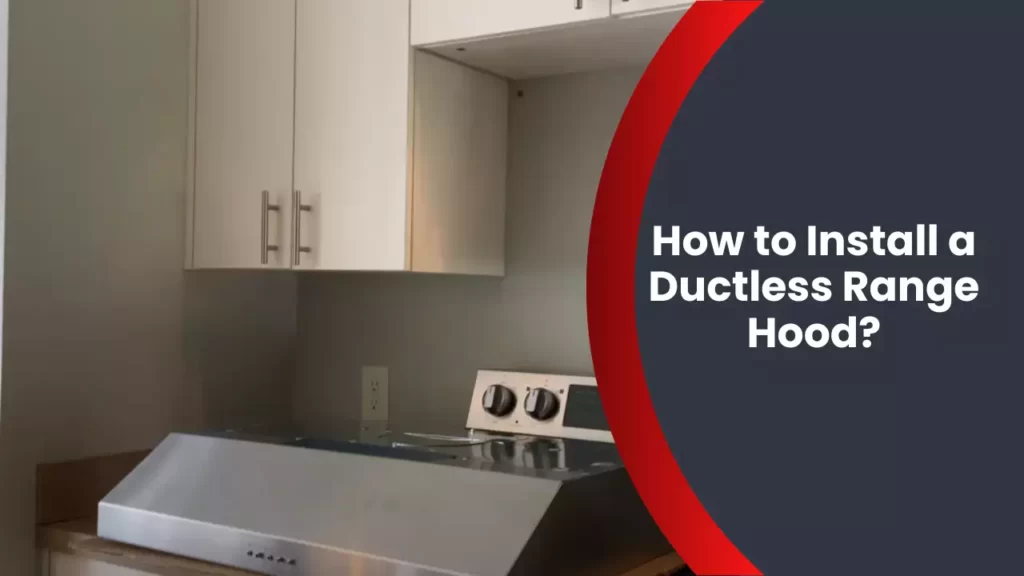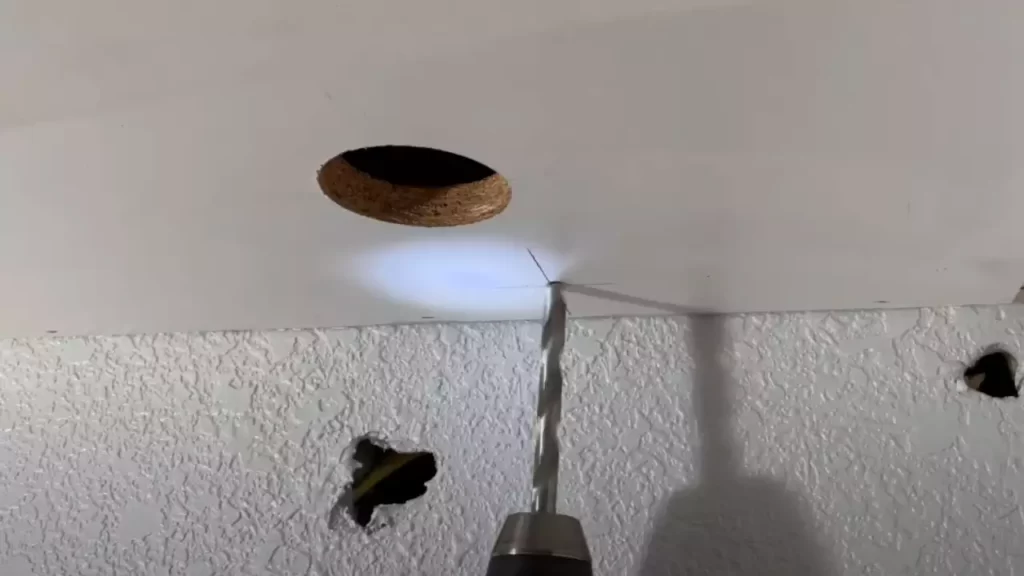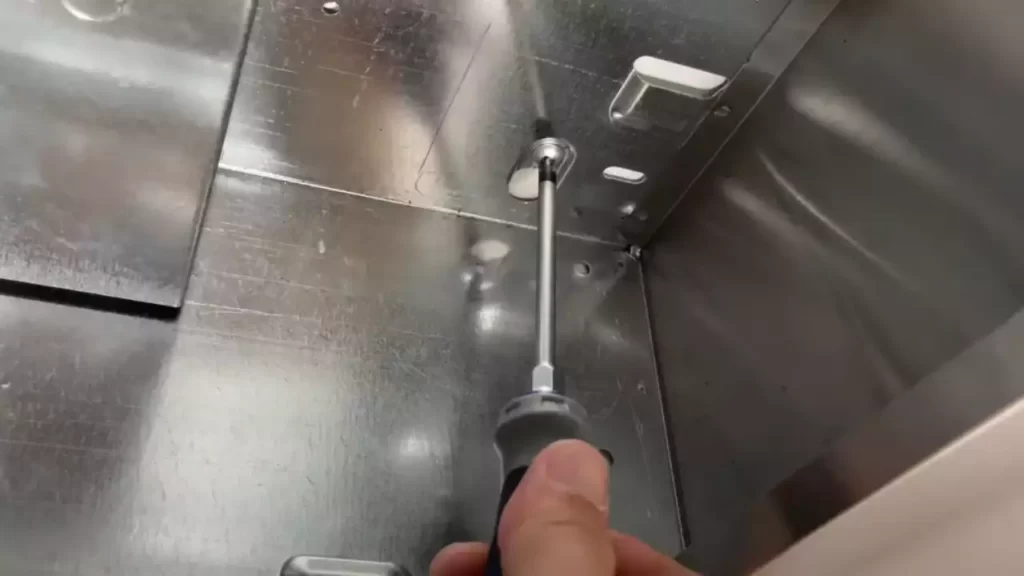Installing a ductless range hood involves a few simple steps. First, choose a suitable location for the hood, considering the distance from the stove and any nearby electrical outlets or cabinets.
Next, assemble the necessary tools and equipment, such as a drill, screws, and mounting brackets. Install the mounting brackets securely into the wall or cabinet. Once the brackets are in place, attach the range hood to the brackets, ensuring it is level.
Finally, connect the hood to the power supply and test its functionality. With these steps, you can easily install a ductless range hood in your kitchen.
Choosing The Right Ductless Range Hood
When it comes to selecting a ductless range hood for your kitchen, there are several factors to consider. The right range hood can make a significant difference in keeping your kitchen clean and odor-free. In this section, we will explore the key factors you should keep in mind when choosing a ductless range hood.
Factors to consider when selecting a ductless range hood
1. Type of Filtration System: Ductless range hoods utilize filters to trap grease, smoke, and odors. There are primarily two types of filters available – charcoal filters and mesh filters. Charcoal filters are excellent at removing odors but may require frequent replacement. On the other hand, mesh filters are washable and reusable, making them a more cost-effective long-term option.
2. Airflow Capacity: The airflow capacity of a range hood determines how effectively it can remove smoke and odors from your kitchen. It is measured in cubic feet per minute (CFM). To determine the appropriate airflow capacity, consider the size of your kitchen. As a general guideline, choose a range hood with a minimum of 100 CFM per linear foot of cooktop.
3. Noise Level: Range hoods can generate noise as they function, and this can be a significant consideration for many homeowners. Look for models that offer low noise levels without compromising on performance. Manufacturers often provide noise ratings in decibels (dB) on their product specifications, so be sure to check these to find a quieter option.
4. Sleek Design: Apart from functionality, the aesthetics of your range hood also play a crucial role in enhancing your kitchen’s overall appearance. Look for a range hood that complements your kitchen style and décor. Some range hoods even offer customizable options such as different finishes and colors to match your kitchen’s design perfectly.
Determining the appropriate size for your kitchen
When selecting a ductless range hood, it is essential to determine the appropriate size for your kitchen. A range hood that is too small may not effectively remove the smoke and odors, while a range hood that is too large can overpower your kitchen space. To measure the appropriate size:
- Measure the width of your cooktop or range.
- Ensure that the range hood you choose is at least as wide as your cooktop. Ideally, it should be slightly wider for maximum efficiency.
- Consider the height of your kitchen ceiling. As a general guideline, allow at least 24-30 inches of clearance between the cooktop and the bottom of the range hood.
By considering these factors and determining the appropriate size for your kitchen, you can ensure that you choose the right ductless range hood that suits your needs and enhances your kitchen’s functionality and aesthetics.

Steps To Prepare For Installation
Before you can install a ductless range hood, it’s important to take the necessary steps to prepare. By gathering the necessary tools and materials and accurately measuring and marking the installation area, you’ll ensure a successful and efficient installation process.
Gathering the necessary tools and materials
Before you begin the installation, it’s crucial to have all the required tools and materials on hand. This will not only save you time but also ensure that you have everything you need to complete the job.
Here is a list of the essential tools and materials you’ll need:
| Tools | Materials |
|---|---|
|
|
Measuring and marking the installation area
The next step in the preparation process is to accurately measure and mark the installation area. This will ensure that the range hood is installed in the correct position and at the proper height.
Follow these steps to measure and mark the installation area:
- Start by measuring the width of the range hood. Use a tape measure to determine the exact distance.
- Next, locate the area where you want to install the range hood. Make sure there is enough clearance and wall space for the hood to fit properly.
- Using a pencil, mark the top edge of the range hood’s installation location. This will serve as a guide for mounting.
- Using a level, ensure that the marked line is straight and level. This will prevent any installation issues.
- Measure the height at which you want to install the range hood. Mark this measurement on the wall as well.
By accurately measuring and marking the installation area, you’ll be off to a great start when it comes to installing your ductless range hood.

Installing A Ductless Range Hood
Installing a ductless range hood is a straightforward process that can greatly improve the air quality and aesthetics of your kitchen. Whether you’re renovating your kitchen or simply upgrading your range hood, this guide will walk you through the installation process. In this section, we’ll cover how to mount the range hood to the wall or cabinet, connect it to the power source, and attach it to the ventilation system.
Mounting the range hood to the wall or cabinet
Mounting the ductless range hood to the wall or cabinet is the first step in the installation process. Before you begin, make sure you have the necessary tools: a screwdriver, measuring tape, and a level. Here’s a step-by-step guide:
- Measure the distance between the cabinets or above the stove where you want to install the range hood.
- Using a level, mark the desired mounting position on the wall or cabinet.
- Hold the range hood against the marked position and use a screwdriver to screw it into place.
- Make sure the hood is securely attached and level. Adjust as needed.
Connecting the ductless range hood to the power source
Once you have mounted the range hood, the next step is to connect it to the power source. Follow these steps:
- Locate the power supply in your kitchen.
- Turn off the power to the range hood circuit. Safety first!
- Connect the range hood’s electrical wires to the corresponding wires in the power supply using wire nuts.
- Tighten the wire nuts to ensure a secure connection.
- Turn the power back on and test the range hood to ensure it is functioning properly.
Attaching the ductless range hood to the ventilation system
Lastly, you’ll need to attach the ductless range hood to the ventilation system. Follow these steps:
- Locate the ventilation outlet in your kitchen.
- Measure and cut the appropriate length of ductwork to connect the range hood to the outlet.
- Attach one end of the ductwork to the range hood’s exhaust outlet and the other end to the ventilation outlet.
- Secure the ductwork with foil tape to ensure a tight seal.
- Test the range hood to make sure the air is properly ventilating through the system.
By following these steps, you can easily install a ductless range hood in your kitchen. Remember to always follow the manufacturer’s instructions and consult a professional if needed.

Using Proper Ventilation Filters
When it comes to installing a ductless range hood, using proper ventilation filters is essential for efficient kitchen ventilation. Ventilation filters play a crucial role in removing smoke, grease, and odors from the cooking area, ensuring a clean and healthy environment in your kitchen. In this section, we will explore different types of filters and guide you on how to choose the appropriate filter for your ductless range hood.
Understanding the Different Types of Filters
There are several types of filters available for ductless range hoods. Each type has its own unique characteristics and functionality. Understanding these different filters will help you make an informed decision for your kitchen. Let’s take a look at the three most common types:
| Type of Filter | Characteristics |
|---|---|
| Mesh Filters | Constructed from aluminum or stainless steel mesh, these filters are excellent at capturing grease particles and are easily washable for reuse. |
| Charcoal Filters | These filters are composed of activated charcoal, which effectively absorbs and eliminates odors. They are not washable and need to be replaced periodically. |
| Baffle Filters | Designed with multiple layers of metal baffles, these filters provide superior grease filtration and are dishwasher safe for easy cleaning. |
Choosing the Appropriate Filter for Your Ductless Range Hood
Choosing the right filter for your ductless range hood depends on your specific cooking needs and the type of contaminants you want to eliminate. Here are a few factors to consider when selecting a filter:
- Grease Filtration: If you frequently cook dishes that produce a lot of grease, mesh filters or baffle filters are the most suitable options. They effectively trap and remove grease particles.
- Odor Elimination: If you want to get rid of unpleasant smells, charcoal filters are the way to go. They absorb and neutralize cooking odors, leaving your kitchen fresh.
- Maintenance: Consider the ease of maintenance when choosing a filter. Mesh filters and baffle filters can be easily cleaned, while charcoal filters need to be replaced periodically.
Remember, it’s essential to follow the manufacturer’s recommendations for your specific range hood model. They will provide guidance on the compatible filters and their proper installation. By selecting the appropriate ventilation filter, you can ensure that your ductless range hood performs optimally and keeps your kitchen environment clean and healthy.

Maintenance And Cleaning Tips
Proper maintenance and regular cleaning are crucial for keeping your ductless range hood running efficiently. In this section, we will discuss some important tips to help you maintain and clean your range hood effectively.
Regularly cleaning the filters
The filters of your ductless range hood play a vital role in trapping grease, smoke, and other airborne particles. Over time, these filters can become clogged, affecting the performance of your hood. To ensure optimal functioning, it is essential to clean the filters on a regular basis.
To clean the filters, first, turn off the range hood and unplug it from the power source. Carefully detach the filters from the hood, following the manufacturer’s instructions. Next, rinse the filters under running water to remove any loose debris. For deeper cleaning, you can soak the filters in warm water mixed with a mild detergent. After soaking, gently scrub the filters to remove any stubborn grease or dirt. Rinse them thoroughly and allow them to air dry before reattaching them to the hood.
Troubleshooting common issues with ductless range hoods
Even with proper maintenance, you may encounter some common issues with your ductless range hood. Here are a few troubleshooting tips to help you address these problems:
- Loud noise: If your range hood starts making excessive noise, it could be due to loose parts or a malfunctioning motor. Check all the screws and connections to ensure they are secure. If the noise persists, it is recommended to contact a professional technician for further inspection.
- Low airflow: If you notice reduced airflow from your range hood, check if the filters are clean and free from any blockages. Also, ensure that the exhaust vent and ductwork are not obstructed. Cleaning or replacing the filters and clearing any debris should help restore proper airflow.
- Strange odors: If your range hood emits unpleasant odors, it could be due to accumulated grease or food particles in the filters or other parts. Thoroughly clean the filters, hood, and ductwork to eliminate any lingering odors. In some cases, replacing the filters may be necessary.
By following these maintenance and cleaning tips, you can prolong the lifespan of your ductless range hood and ensure optimal performance. Regular maintenance and cleaning not only improve the functionality of your hood but also help maintain a clean and healthy cooking environment in your kitchen.
Enhancing Kitchen Safety
Proper ventilation while cooking is crucial for maintaining a safe and healthy kitchen environment. One effective way to ensure proper ventilation is by installing a ductless range hood. Not only does it eliminate cooking odors and harmful airborne particles, but it also enhances kitchen safety by removing smoke and preventing the buildup of grease and heat. In this guide, we will discuss how to install a ductless range hood and provide tips on how to maintain a clean and odor-free kitchen environment.
Ensuring Proper Ventilation While Cooking
When it comes to cooking, proper ventilation is key. Without proper ventilation, cooking odors and smoke can linger in your kitchen, resulting in an unpleasant odor and potential health hazards. To ensure proper ventilation, follow these steps to install a ductless range hood:
- Begin by measuring the space above your cooktop to determine the size of the range hood you will need.
- Locate the studs or beams in the wall or ceiling where you want to mount the range hood. Using a stud finder can be helpful for this step.
- Mark the positions where the screws will go, ensuring they align with the studs for solid support.
- Drill pilot holes for the screws, making sure the holes are slightly smaller than the screws to provide a tight fit.
- Securely attach the range hood to the wall or ceiling using the screws and a screwdriver.
- Connect the power supply to the range hood, following the manufacturer’s instructions for wiring.
- Lastly, test the range hood to ensure it is functioning properly. Turn on the fan and check if the airflow is strong and adequate.
Tips to Maintain a Clean and Odor-Free Kitchen Environment
Now that you have installed your ductless range hood, it’s important to maintain a clean and odor-free kitchen environment. Follow these tips to keep your kitchen fresh and free from cooking residue:
- Regularly clean the filters of your range hood. These filters are designed to trap grease and other particles, so cleaning them regularly will ensure optimum performance.
- Wipe down the exterior surfaces of your range hood to remove any built-up grease or residue. Use a mild cleaning solution and a soft cloth to avoid damaging the finish.
- Avoid frying foods with excessive oil or cooking at high temperatures for extended periods to minimize the amount of smoke and odor produced.
- Consider using an air purifier in your kitchen to further eliminate cooking odors and improve air quality.
- When cooking, use lids on pots and pans to prevent smoke and odors from spreading throughout the kitchen.
By following these tips, you can ensure that your kitchen remains clean, odor-free, and most importantly, safe. Installing a ductless range hood not only enhances kitchen safety but also provides you with a comfortable cooking environment, free from unwanted odors and harmful particles. Take the necessary steps to install and maintain your range hood today, and enjoy a safer and healthier kitchen.
Frequently Asked Questions
How Do I Install A Ductless Range Hood?
To install a ductless range hood, begin by identifying the ideal location on the wall. Measure and mark the height for mounting. Drill holes and attach the mounting bracket. Place the range hood onto the bracket and secure it. Connect the wiring and install the necessary filters.
Finally, test the range hood to ensure proper functionality.
Are Ductless Range Hoods Effective?
Yes, ductless range hoods are effective at removing smoke, odors, and grease from the air in your kitchen. They use charcoal filters to trap and filter out contaminants. While not as powerful as ducted range hoods, they offer convenience and ease of installation in spaces where ductwork is not possible.
What Are The Benefits Of Using A Ductless Range Hood?
Using a ductless range hood offers several benefits. It eliminates the need for extensive ductwork installation, making it suitable for apartments or rented properties. Ductless range hoods are also energy-efficient and recirculate clean air back into the kitchen. Additionally, they are flexible and can be installed in various locations around the kitchen.
Conclusion
Installing a ductless range hood may seem daunting, but with the right guidance, it can be a smooth process. From choosing the right location to properly connecting the venting, this blog post has provided step-by-step instructions for a successful installation.
By following these tips and techniques, you can enjoy a cleaner and healthier kitchen environment. So, get started today and experience the benefits of a ductless range hood in your home.
